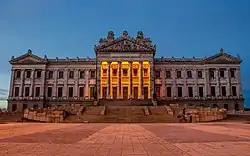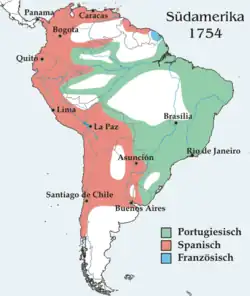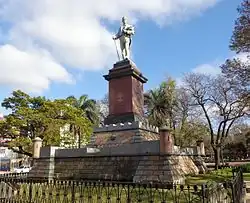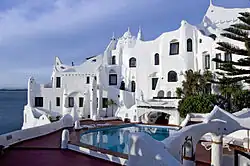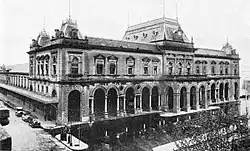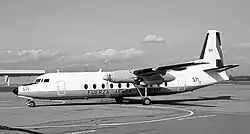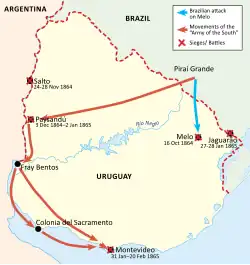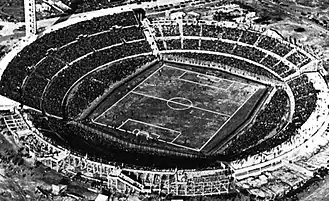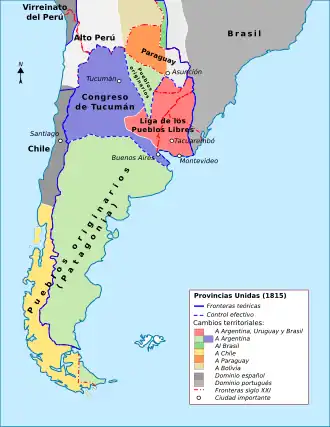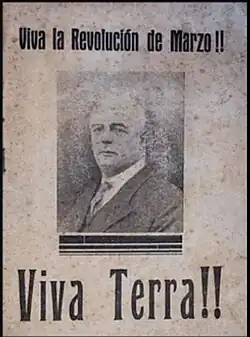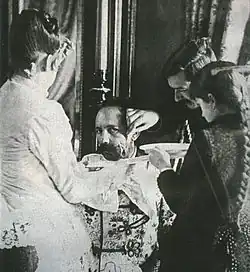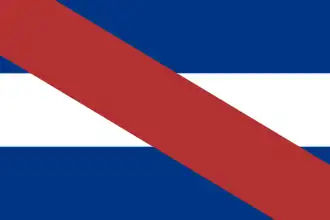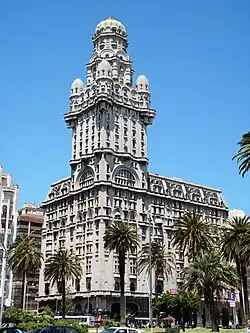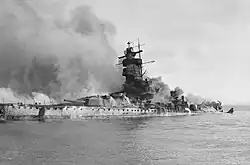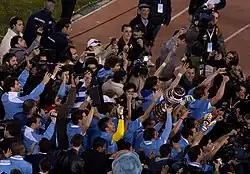Portal:Uruguay
| Participants | Templates | Tasks | Assessment | Popular Pages | Requests |
The Uruguay Portal
Uruguay, officially the Oriental Republic of Uruguay, is a country in South America. It shares borders with Argentina to its west and southwest and Brazil to its north and northeast, while bordering the Río de la Plata to the south and the Atlantic Ocean to the southeast. It is part of the Southern Cone region of South America. Uruguay covers an area of approximately 176,215 square kilometers (68,037 sq mi). It has a population of almost 3.5 million people, of whom nearly 2 million live in the metropolitan area of its capital and largest city, Montevideo. The area that became Uruguay was first inhabited by groups of hunter gatherers 13,000 years ago. The first European explorer to reach the region was Juan Díaz de Solís in 1516, but the area was colonized later than its neighbors. At the time of European arrival, the Charrúa were the predominant tribe, alongside other groups such as the Guaraní and the Chaná. However, none of these groups were socially or politically organized, which contributed to their decline. Amid territorial disputes, the Portuguese established Colônia do Sacramento in 1680, and the Spanish founded Montevideo as a military stronghold. Uruguay secured its independence between 1811 and 1828, following a four-way struggle involving Portugal, Spain, and later the United Provinces of the Río de la Plata and the Empire of Brazil. In 1830, the country enacted its constitution and was formally established as an independent state. During the early years following its independence, Uruguay remained subject to foreign influence and intervention, along with a series of internal conflicts and political turmoil. From the second half of the 19th century, the country saw significant waves of European migration—mainly from Spain, Italy, and France—which greatly influenced its demographics and laid the foundation for modern-day Uruguayan culture and society. In the early 20th century, a series of pioneering economic, labor, and social reforms were introduced, leading to the establishment of a highly developed welfare state. Coupled with its political stability, this contributed to the country being known as the "Switzerland of the Americas". Following Uruguay's independence, national politics were dominated by two political parties: the Colorado Party and the National Party, which clashed in several civil wars during the 19th century and are collectively known as the 'Traditional Parties'. At various points in history, the Executive Branch was organized as a collegiate body, with the last instance of this occurring in 1967. A series of economic crises and the fight against far-left urban guerrilla warfare in the late 1960s and early 1970s culminated in the 1973 coup d'état, which established a civic-military dictatorship until 1985. Uruguay is today a democratic constitutional republic, with a president who serves as both head of state and head of government. Uruguay is highly ranked in international measurements of democracy, government transparency, economic freedom, social progress, income equality, per capita income, innovation, and infrastructure. The country has fully legalized cannabis (the first country in the world to do so), as well as same-sex marriage and abortion. It is a founding member of the United Nations, OAS, and Mercosur. (Full article...) Selected article -The Platine War (Spanish: Guerra Platina, Portuguese: Guerra do Prata, Guerra contra Oribe e Rosas; 18 August 1851 – 3 February 1852) was fought between the Argentine Confederation and an alliance consisting of the Empire of Brazil, Uruguay, and the Argentine provinces of Entre Ríos and Corrientes, with the participation of the Republic of Paraguay as Brazil's co-belligerent and ally. The war was part of a decades-long dispute between Argentina and Brazil for influence over Uruguay and Paraguay, and hegemony over the Platine region (areas bordering the Río de la Plata). The conflict took place in Uruguay and northeastern Argentina, and on the Río de la Plata. Uruguay's internal troubles, including the longrunning Uruguayan Civil War (La Guerra Grande – "The Great War"), were heavily influential factors leading to the Platine War. In 1850, the Platine region was politically unstable. Although the Governor of Buenos Aires, Juan Manuel de Rosas, had gained dictatorial control over other Argentine provinces, his rule was plagued by a series of regional rebellions. Meanwhile, Uruguay struggled with its own civil war, which started after gaining independence from the Brazilian Empire in 1828 in the Cisplatine War. Rosas backed the Uruguayan Blanco party in this conflict, and further desired to extend Argentine borders to areas formerly occupied by the Spanish Viceroyalty of the Río de la Plata. This meant asserting control over Uruguay, Paraguay, and Bolivia, which threatened Brazilian interests and sovereignty since the old Spanish Viceroyalty had also included territories which had long been incorporated into the Brazilian province of Rio Grande do Sul. (Full article...) Selected picture -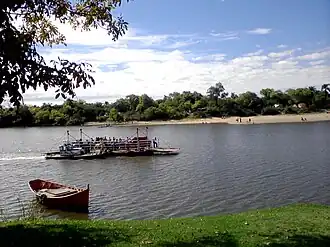 Pontoon ferry carrying cars and passengers from La Charqueada (General Enrique Martínez) of Treinta y Tres Department to a road joining with Cebollatí of Rocha Department across Río Cebollatí. Did you know -
CategoriesSelect [►] to view subcategories
Uruguay Uruguay-related lists Buildings and structures in Uruguay Culture of Uruguay Economy of Uruguay Education in Uruguay Geography of Uruguay Government of Uruguay Health in Uruguay History of Uruguay Organizations based in Uruguay Uruguayan people Politics of Uruguay Society of Uruguay Uruguay stubs People -Darío Debray Silva Pereira (born 2 November 1972) is a Uruguayan retired professional footballer who played as a striker. After making a name for himself in his country and in Italy with Cagliari, he spent the following seven years of his career in Spain – scoring 48 La Liga goals in 163 games, mostly for Málaga – before moving to England. He suffered a serious car accident shortly after leaving Portsmouth, which caused him to lose a leg and effectively end his career. (Full article...) General imagesThe following are images from various Uruguay-related articles on Wikipedia.
Related portalsTopicsRecognized content
Featured articlesGood articlesAssociated WikimediaThe following Wikimedia Foundation sister projects provide more on this subject:
Award
Things you can do
Articles that need Attention
Discover Wikipedia using portals
| |||||||||||||

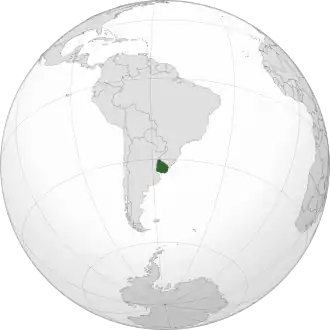
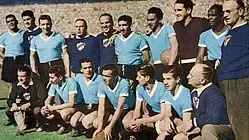

.jpg)
.jpg)
